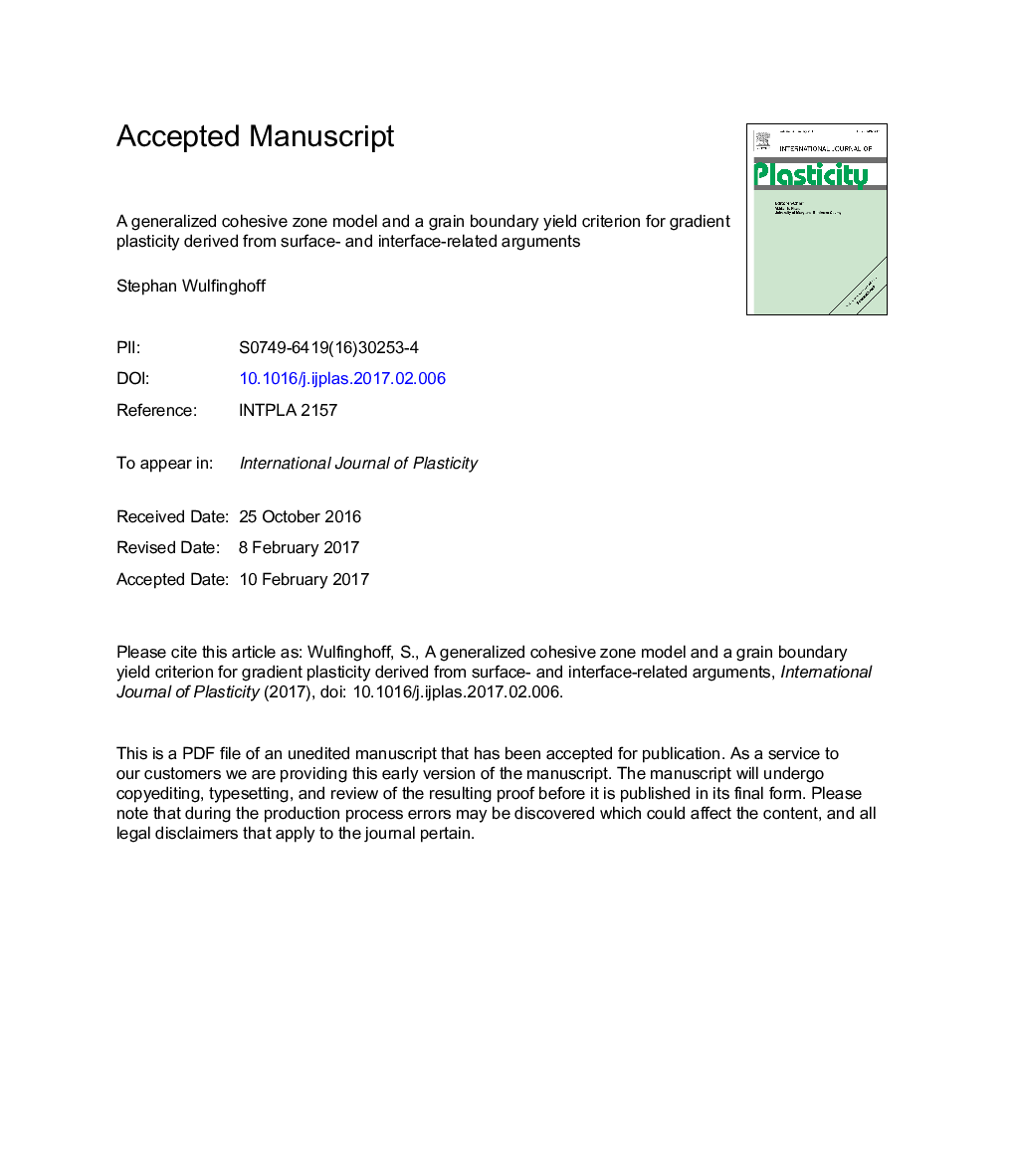| Article ID | Journal | Published Year | Pages | File Type |
|---|---|---|---|---|
| 5016779 | International Journal of Plasticity | 2017 | 31 Pages |
Abstract
In this work, new generalized interface models for gradient plasticity based on the dislocation density tensor are presented. The first one is a new generalized cohesive zone model which can be used for interface damage and delamination in gradient plasticity applications. The second one is a new grain boundary yield criterion with isotropic and kinematic hardening and a related flow rule, being formulated based on results from discrete dislocation simulations. The derivation starts from surface-related considerations, like in the work of Del Piero (2009), who starts with the virtual power of the external forces and then derives the principle of virtual power (Povp) rather than postulating it. Here, however, the formulation is carried out without using the notion of 'virtual power', although the derivation may as well be based on the Povp. Moreover, the derivation does not involve new micro force balance equations. In addition, the dislocation density tensor occurs rather as an outcome of the approach than as an ingredient. The discussion is closed by an example.
Related Topics
Physical Sciences and Engineering
Engineering
Mechanical Engineering
Authors
Stephan Wulfinghoff,
